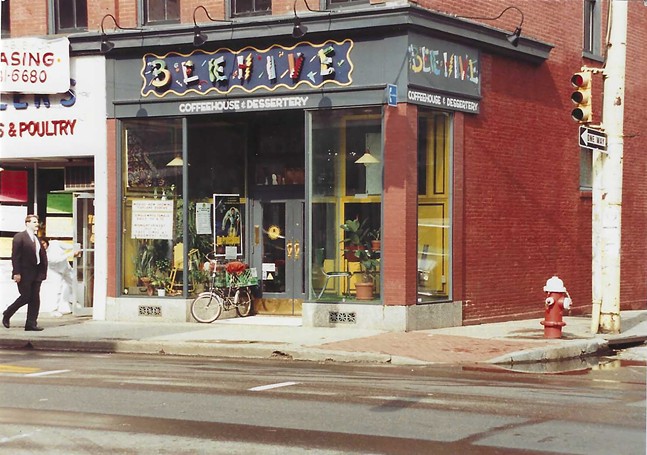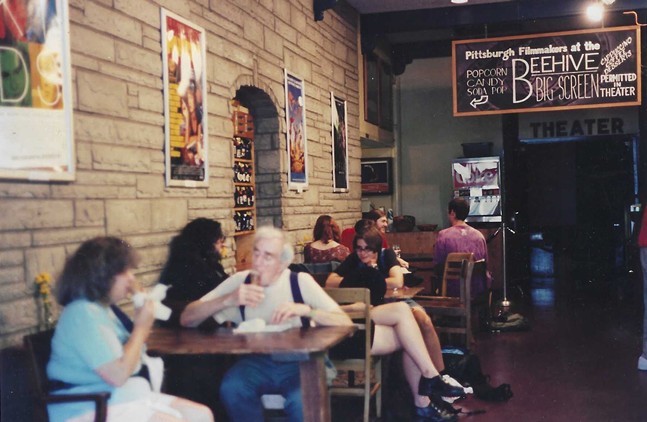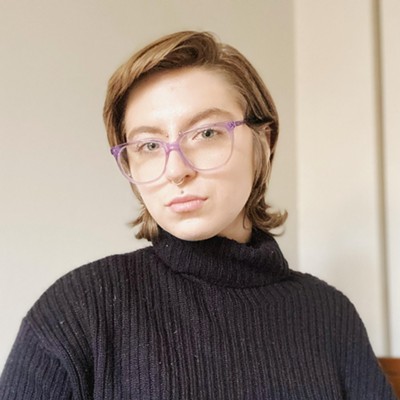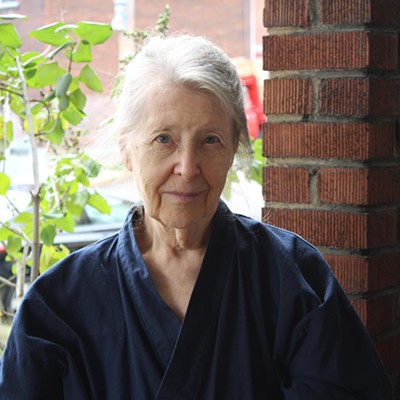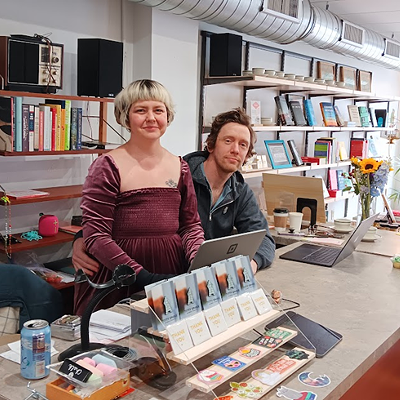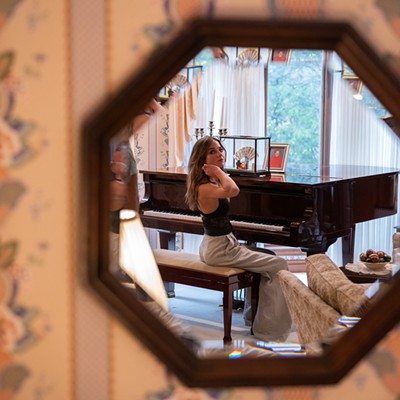When David Rullo was shopping his idea to publishers for a book about Pittsburgh’s legendary coffee shop, the Beehive, folks across the table didn’t usually get it.
A coffee shop? Really?
Of course, we have coffee shops on every corner now, filled with people sipping quietly and pecking away unobtrusively on their laptops. But the Beehive was a different beast entirely.
When they opened the first Beehive on the South Side in 1991, Scott Kramer and Steve Zumoff knew they were doing something different – there were hardly any coffee shops anywhere, and Starbucks hadn’t moved east of Chicago yet. But they also had no idea how beloved the Beehive would become, or how it would nudge at least part of the city’s culture in directions it hadn’t yet considered.
“There was just this positive sense of community that existed around this spot,” notes Rullo, who is a staff writer at the Pittsburgh Jewish Chronicle. “Like every person I spoke to thought of this place as theirs.”
Rullo’s book found a publisher, Arcadia Books, who urged him to make it a wide-angle project: Gen X Pittsburgh: The Beehive and the ‘90s Scene. The Beehive still serves as the book's constant setting, but the story dives deeper, shining a light on a slice of '90s culture and nightlife that grew up in and around the pioneering Pittsburgh coffee shop.
Inclusive nightlife spot. It was all-ages, and open 24 hours.
Music and performance venue(s). Early acts included acoustic folk and Rusted Root. In later years, the stage mutated into whatever weirdness seemed like fun — ramen noodle wrestling (!) and the fire-eating, inferno-tempting “Circus Apocalypse.” Bands like Guided By Voices and the Jesus Lizard played at the Oakland Beehive, and apparently, the dudes from Red Hot Chili Peppers could sit quietly with a coffee on the South Side, (relatively) unbothered by the public.
Curated art gallery. It was open to artists of any kind, with any level of experience.
Movie theater. The Oakland location featured art-house movies, festivals, oddities and cult hits (Kids, Dazed & Confused, etc.)
Bar. The Oakland location also served booze, somehow.
Weirdo haven. The Beehive had tables ready for punks, hippies, goths, nerds, and every other eccentric subculture under the sun.
Destination. No matter the night, the Beehive was a reason to go to the South Side, or a reason to hang out in Oakland.
Pioneering pinball parlor. Did the unexpected revival of pinball (now everywhere) start at the Beehive? Rullo makes the case.
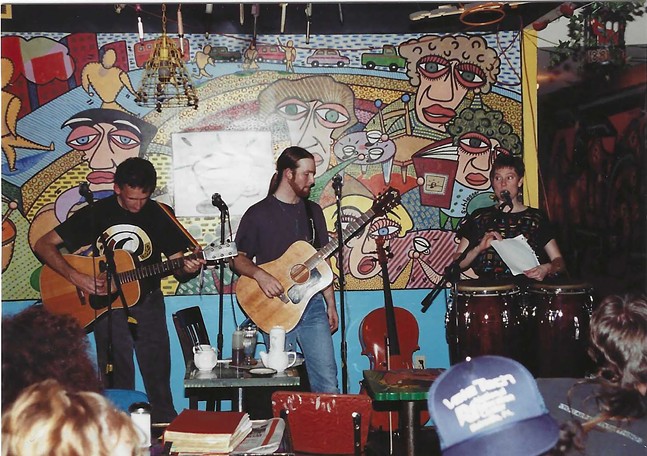
“I spoke with one of the original baristas who said that an important thing she learned [at the Beehive] was that cheesecake absorbs cigarette smoke,” notes Rullo.
The ‘90s was a pretty intolerant time, and the threat of an ass-kicking (or worse) seemed to beckon from every sidewalk. But the Beehive was fine with otherwise-dangerous levels of eccentricity, deviance, and nerdiness. Suddenly, the “weirdos” had numbers. In one of Rullo’s best stories, a regular with a genetic disorder was getting bullied by a newcomer, who sneered “They let [r-word]s in here?” A Beehive patron told him off. When he replied, “Who’s going to back you up? Where’s your army?” everyone in the shop stood up. “We’re his army.”
Gen X Pittsburgh recalls a time when jobs were scarce and being a barista at the Beehive — or even a janitor — was a pretty good gig. If your band had to go on tour, or you needed to disappear for a while, Zumoff and Kramer would usually give you some hours when you got back.
In the early ‘90s, the South Side still had a strong sense of community, even before it became a nightlife destination. But, like much of post-industrial Pittsburgh, it was fading fast.
“After the steel mills had closed, it left people feeling trapped,” says Rullo. “The Beehive presented some hope that the South Side would become something else.”
It did. After the Beehive arrived, other places like Slacker and the Culture Shop followed. Dee’s Café went from an old-man bar to a Gen-X hangout. Suddenly, there were crowds on East Carson Street again.
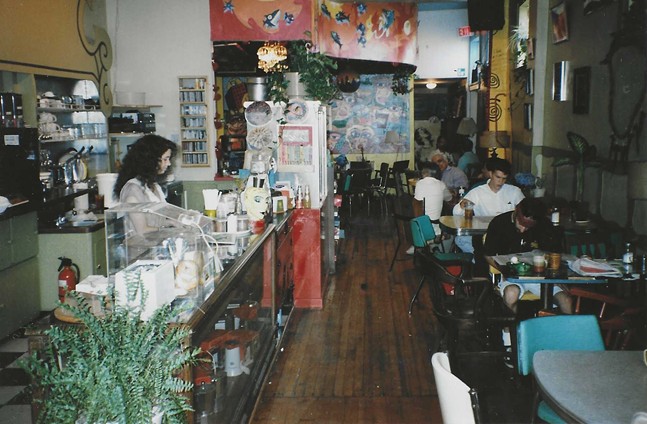
Gen X Pittsburgh: The Beehive and the ‘90s Scene inadvertently poses the question: were the ‘90s a better time?
Well, as someone who was there … I certainly don’t miss inhaling toxic gasses with every breath. But rent was cheap (I once paid $150/month to live on the South Side), food was cheap, everything was cheap. Maybe it was better in the sense that the city was always open and even introverts had to go out into the night to find music, movies, etc., to consume, instead of just asking our phones. And we all ended up at the Beehive more often than not.

